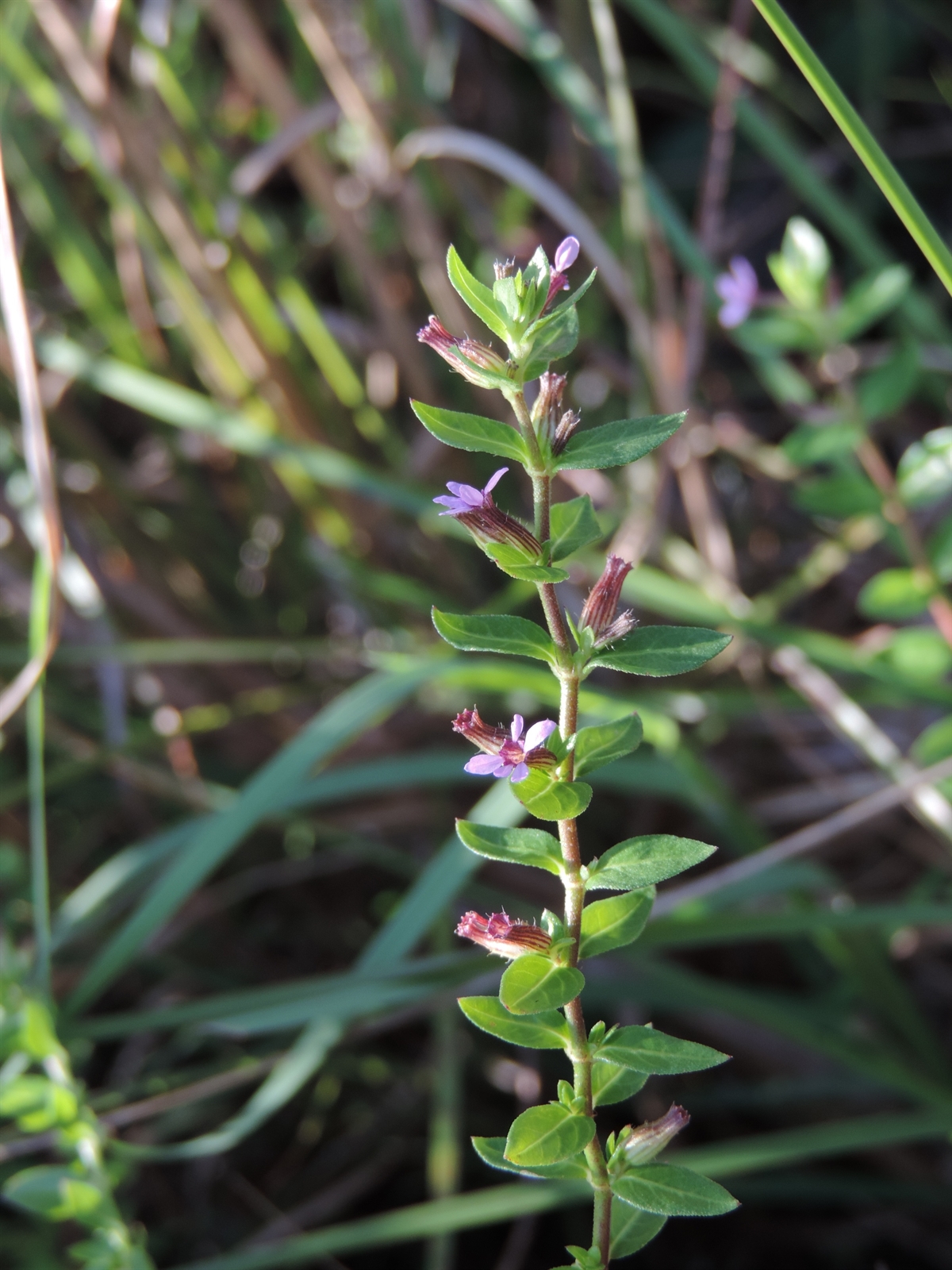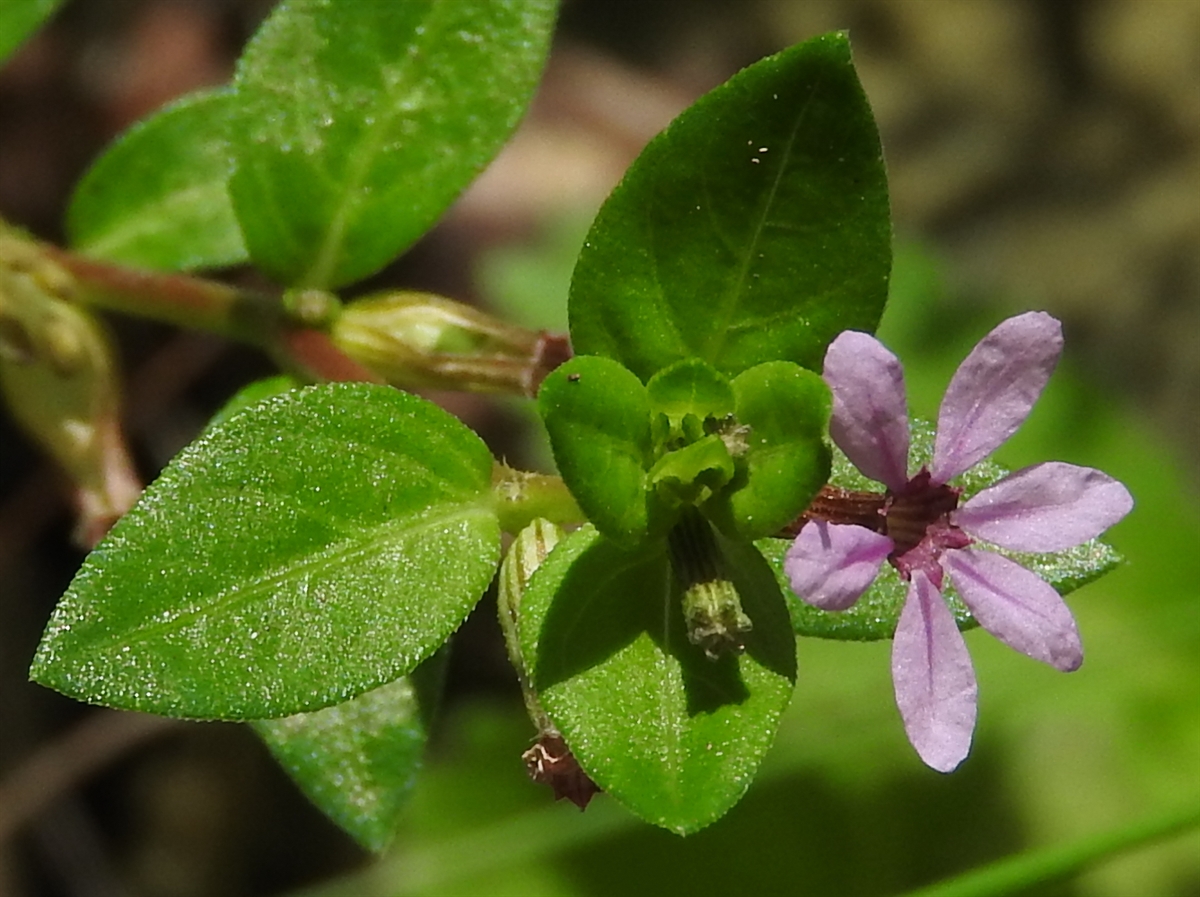Habit: Cuphea parsonsia grows as an herb up to 60 cm in height with photosynthetic stems to 1 cm in diameter, spreading and rooting at the nodes. The (sub)sessile leaves are arranged oppositely, ovate to oblong, to 2 cm long, 1 cm wide. The leaves have an acute leaf apex and a serrulate margin.
The complete, perfect, actinomorphic flowers are solitary in leaf axils. The calyx has 6 fused, red-ribbed, slightly pubescent sepals. The corolla has 6 fused to their middle, pink petals. There are 6 fused stamens adnate to the corolla. The ovary is superior with 1 locule and multiple ovules. The fruit is a capsule.
Habitat: Cuphea parsonsia grows along the edges Fresh Water Wetlands, and in sinkholes and low-lying wet areas in Dry Broadleaf Evergreen Formations – Shrublands (scrublands).
Distribution: Cuphea parsonsia occurs in the central and northern island groupings in the Lucayan Archipelago and the Greater Antilles.
Medicinal/Cultural/Economic usage: Cuphea parsonsia is not known to be used medicinally in the Lucayan Archipelago. Elsewhere in the Greater Antilles Cuphea parsonsia is used to treat as an aphrodisiac, for respiratory problems, pain, and gynecological issues.

